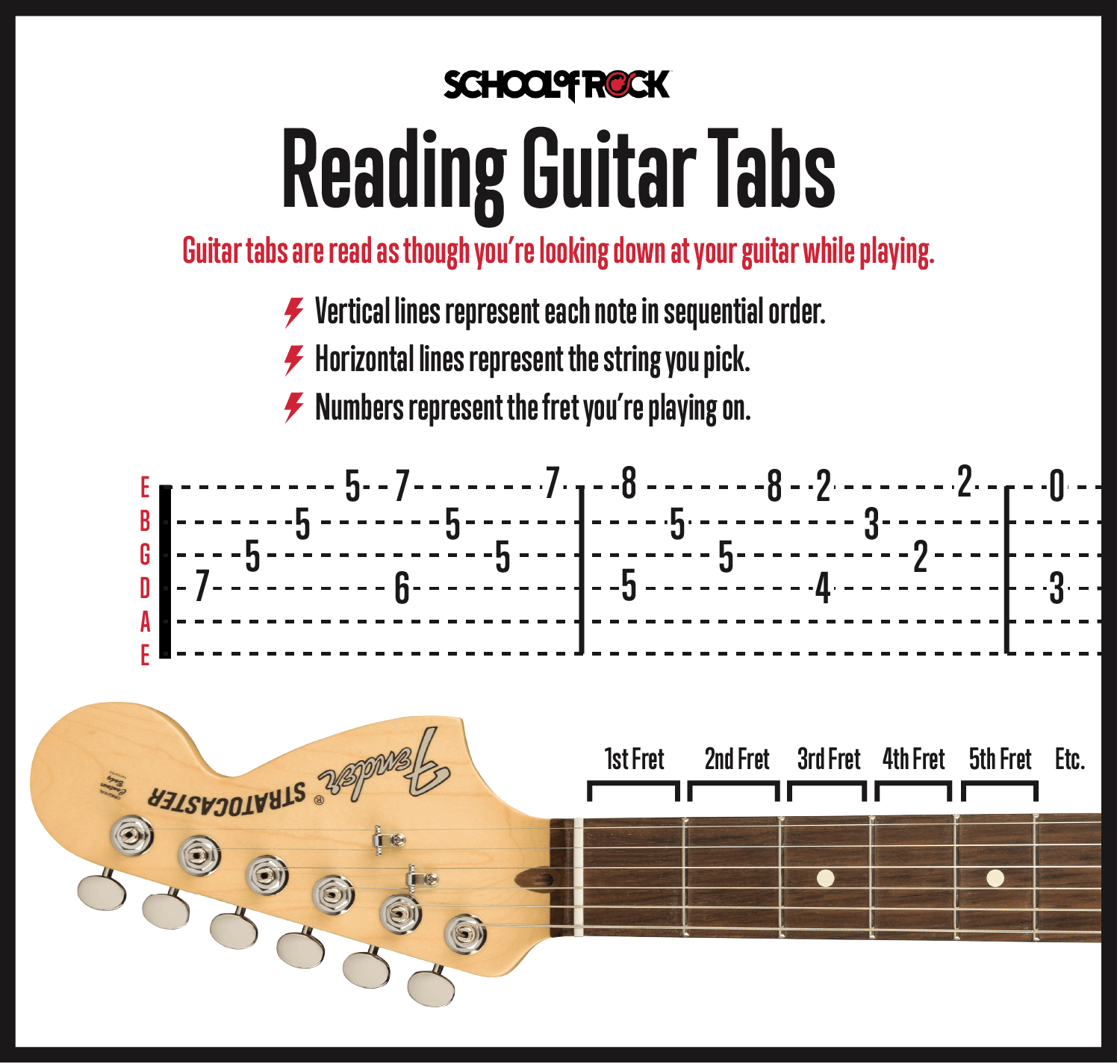Tab Notation
- id: 1716119163
- Date: May 19, 2024, 11:49 a.m.
- Author: Donald F. Elger
 Tablature,
or tab, is a form of musical notation specifically designed for stringed
instruments like the guitar, bass, or banjo. Unlike traditional
notation, which indicates musical pitch on a staff, tablature indicates
the specific frets and strings on the instrument where the musician
should place their fingers. Here’s a quick overview of how tab music
notation works:
Tablature,
or tab, is a form of musical notation specifically designed for stringed
instruments like the guitar, bass, or banjo. Unlike traditional
notation, which indicates musical pitch on a staff, tablature indicates
the specific frets and strings on the instrument where the musician
should place their fingers. Here’s a quick overview of how tab music
notation works:
Components of Tablature
- Lines: Each line corresponds to a string on the instrument. For a standard six-string guitar, there are six horizontal lines, with the bottom line representing the lowest-pitched string (low E) and the top line representing the highest-pitched string (high E).
- Numbers: The numbers on the lines represent the frets where the fingers are to be placed. For example, a “3” on the bottom line means you should press down the third fret on the low E string. A “0” indicates an open string, meaning the string is played without fretting any notes.
- Symbols: Tabs also use various symbols to indicate techniques such as bends, slides, hammer-ons, pull-offs, and vibrato. Each tab creator may use slightly different symbols, so it’s often helpful to look for a legend or a key explaining the specific symbols used.
Reading Tablature
- Left to Right: Tabs are read from left to right, similar to reading text. Each number or symbol represents a note or chord to be played at that point in the music.
- Chords: When numbers are stacked vertically, they represent chords, meaning these notes should be played simultaneously.
- Rhythmic Information: Standard tablature does not usually include rhythmic notation, which can make it difficult to understand the timing of notes unless you’re familiar with the song. Some advanced tabs might include rhythmic symbols or staff notation above the tab to convey timing.
Advantages and Disadvantages
- Advantages: Tabs are straightforward and easy to understand without needing to read music. They provide clear instructions on where to place your fingers on the instrument.
- Disadvantages: Tabs lack detailed rhythmic information and don’t indicate the pitch of the notes, making them less useful for understanding the musical theory behind a piece.
Tablature is a popular tool for learning songs quickly, especially in genres like rock, blues, and folk, where it’s widely used by both amateurs and professionals.